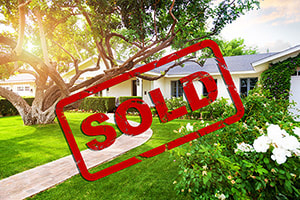 A home warranty provides homebuyers with financial protection and peace of mind. It can be especially beneficial for someone investing in an older home. If an appliance or system covered under the warranty malfunctions or fails, then it will be repaired or replaced at no cost?except for the cost of service. While some sellers include home warranties in the sale, others do not; in which case, you may want to consider buying a home warranty on your own. What Does It Cover? A basic home warranty will typically provide coverage for the home’s plumbing system, electrical system, heating system, water heater, ceiling fans, garbage disposal, exhaust fans, and some of the kitchen appliances. Enhanced home warranties will often provide additional coverage for washing machines, dryers, garage door openers, air conditioners, and other kitchen appliances. You can also add on individual components such as pools, septic systems, and more for additional fees. How Much Does a Home Warranty Cost? A basic home warranty will typically cost between $300 and $600 per year. This means that when a seller includes a home warranty with the house, it’s actually a nice perk, especially if it’s an enhanced home warranty that provides even more coverage. Keep in mind that even though you may receive a free warranty, you’ll still have to pay a service fee for every repair or replacement you request. What Are the Cons? If the seller isn’t including a home warranty in the sale, then you’ll need to buy a home warranty on your own. If you’re buying a newly built home, it’s unlikely you’ll benefit from the home warranty, simply because the systems and appliances are nearly new. It’s also worth noting that home warranties will not cover appliances or systems that were already broken when you purchased the house. Additionally, you won’t be able to choose your own repair person and are limited to the repair person selected by the warranty company. You also won’t be given the option to repair or replace. If repair is possible, that is the course they will typically take even if replacing it makes more sense.
0 Comments
 If you are selling your home in today’s hot real estate market, you will probably encounter every home seller’s dream: multiple purchase offers. Typically, multiple offers result in a bidding war as competing buyers bid up the price of the home. This is great news for a home seller, but there are other things to consider besides the highest price when looking at multiple offers. The Highest Offer Isn’t Always the Best Offer A higher price can mean it is tougher for a buyer to qualify for a mortgage or come up with enough money for a down payment. If the asking price is already at the top of a buyer’s budget and has gone even higher, their lender might get anxious. Always consider the buyer’s qualifications and whose financing is most likely to go through. Your Home Might Not Appraise for a Higher Price The appraisal is something to keep in mind when you are entertaining offers above the asking price. Chances are that your house was listed near the top end of its market value when you put it up for sale. Multiple offers can drive up the home price and exceed the market value of the home. If this occurs, the mortgage lender will require the borrower to bring cash to the table to make up the difference between the loan amount and the proposed purchase price. Compare Contingencies Every home offer comes with contingencies that are designed to financially protect the buyer. Appraisal contingencies, financing contingencies, and home inspection contingencies all give buyers the option to back out of a contract if an issue arises. The fewer the number of contingencies, the better it usually is for the seller because there are fewer reasons a buyer can get out of the contract. Everything Is Negotiable A home seller with multiple offers has leverage to dictate the terms of the sale. If each purchase price offer is similar, take a hard look at other details in the contract. Does one buyer want you to throw in your children’s outdoor play set or the pool table in your rec room? A buyer who has asked for certain concessions might not be as attractive as one who doesn’t have any concessions, even if their purchase price isn’t quite as high. Consider any timing demands competing bidders are making. Is one of them pushing for a quick closing when you need time to stay in the home? Does one want extra time before moving in because they need to sell their own home first? Any and every buyer demand is negotiable, and the home seller has the upper hand in a situation with multiple offers.  The housing shortage continued into April because inventory levels, a metric the National Association of Realtors (NAR) has been tracking since 1982, were near record lows. At the end of April, there were 1.16 million units available for sale, a 10.5% increase from a month ago but a 20.5% decrease from a year ago. At the current sales pace, unsold inventory would supply the market for only 2.4 months, up from the 2.1-month supply in March but down from the 4.0-month supply in April 2020. There Is a Good Forecast Despite this, NAR economists predict relief in the coming months. “We’ll see more inventory come to the market later this year as further COVID-19 vaccinations are administered and potential home sellers become more comfortable listing and showing their homes,” according to Lawrence Yun, chief economist for NAR. “The falling number of homeowners in mortgage forbearance will also bring about more inventory.” In addition, buyer demand was still strong in April despite the lack of inventory. Existing-home sales climbed 20% year over year from January to April 2021. Prices Are Climbing, but Properties Are Selling Quickly An increase in housing inventory levels should help relieve the rapid pace of price appreciation. In April, the median existing-home price climbed to a record-high $341,600, up 19.1% from a year earlier. This capped off 110 consecutive months of year-over-year gains. What’s more, every sales region in the country reported price increases. Yet the high prices seemingly did little to deter buyers, as 88% of homes sold in April were available for less than a month. The average property sold in just 17 days, down from 18 days a month ago and 27 days a year ago. First-Time Buyers Had a Hard Time Finding Homes First-time buyers accounted for 31% of all transactions in April, down from 32% month over month and 36% year over year. According to the NAR “2020 Profile of Home Buyers and Sellers,” the annual share of first-time buyers was 31%. “First-time buyers in particular are having trouble securing that first home for a multitude of reasons, including not enough affordable properties, competition with cash buyers, and properties leaving the market at such a rapid pace,” says Yun. Those cash buyers are typically individual investors or second-home purchasers; these groups represented 17% of all buyers in April, up from 15% a month ago and 10% a year ago. Regional Sales Breakdown Though only the Midwest recorded higher month-over-month sales, each of the four major sales regions in the country saw year-over-year increases.
|
AuthorBe informed with the latest real estate news and useful real estate related information. Archives
March 2025
Categories
|
